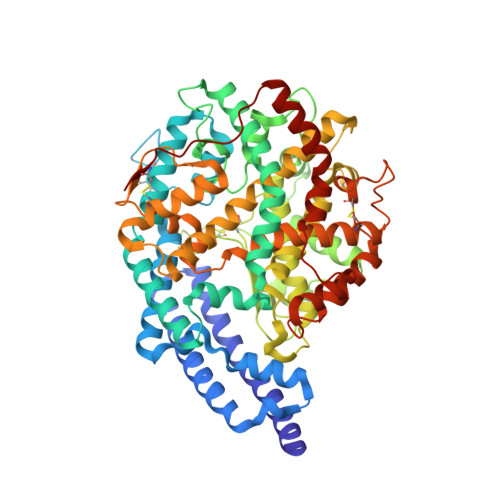A New High-Resolution Crystal Structure of the Drosophila Melanogaster Angiotensin Converting Enzyme Homologue, Ance.
Harrison, C., Acharya, K.R.(2015) FEBS Open Bio 5: 661
- PubMed: 26380810
- DOI: https://doi.org/10.1016/j.fob.2015.08.004
- Primary Citation of Related Structures:
5A2R - PubMed Abstract:
Angiotensin converting enzyme (ACE) is a zinc-dependent dipeptidyl carboxypeptidase with an essential role in blood pressure homeostasis in mammals. ACE has long been targeted in the treatment of hypertension through ACE inhibitors, however current inhibitors are known to cause severe side effects. Therefore, there is a requirement for a new generation of ACE inhibitors and structural information will be invaluable in their development. ACE is a challenging enzyme to work with due to its extensive glycosylation. As such, the Drosophila melanogaster ACE homologue, AnCE, which shares ∼60% sequence similarity with human ACE, can be used as a model for studying inhibitor binding. The presence of ligands originating from the crystallisation condition at the AnCE active site has proved an obstacle to studying the binding of new inhibitor precursors. Here we present the crystal structure of AnCE (in a new crystal form) at 1.85 Å resolution, using crystals grown under different conditions. This new structure may be more suitable for studying the binding of new compounds, with the potential of developing a new generation of improved ACE inhibitors.
- Department of Biology and Biochemistry, University of Bath, Claverton Down, Bath BA2 7AY, UK.
Organizational Affiliation:




















